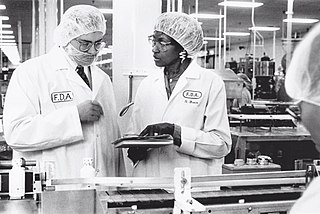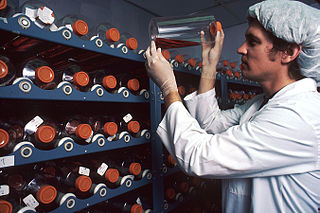
Antimicrobial resistance (AMR) occurs when microbes evolve mechanisms that protect them from the effects of antimicrobials. All classes of microbes can evolve resistance where the drugs are no longer effective. Fungi evolve antifungal resistance, viruses evolve antiviral resistance, protozoa evolve antiprotozoal resistance, and bacteria evolve antibiotic resistance. Together all of these come under the umbrella of antimicrobial resistance. Microbes resistant to multiple antimicrobials are called multidrug resistant (MDR) and are sometimes referred to as superbugs. Although antimicrobial resistance is a naturally occurring process, it is often the result of improper usage of the drugs and management of the infections.

Ciprofloxacin is a fluoroquinolone antibiotic used to treat a number of bacterial infections. This includes bone and joint infections, intra-abdominal infections, certain types of infectious diarrhea, respiratory tract infections, skin infections, typhoid fever, and urinary tract infections, among others. For some infections it is used in addition to other antibiotics. It can be taken by mouth, as eye drops, as ear drops, or intravenously.

A medication is a drug used to diagnose, cure, treat, or prevent disease. Drug therapy (pharmacotherapy) is an important part of the medical field and relies on the science of pharmacology for continual advancement and on pharmacy for appropriate management.
An orphan drug is a pharmaceutical agent that is developed to treat certain rare medical conditions. An orphan drug would not be profitable to produce without government assistance, due to the small population of patients affected by the conditions. The conditions that orphan drugs are used to treat are referred to as orphan diseases. The assignment of orphan status to a disease and to drugs developed to treat it is a matter of public policy that depends on the legislation of the country.

The pharmaceutical industry is an industry in medicine that discovers, develops, produces, and markets pharmaceutical drugs for use as medications to be administered to patients, with the aim to cure and prevent diseases, or alleviate symptoms. Pharmaceutical companies may deal in generic or brand medications and medical devices. They are subject to a variety of laws and regulations that govern the patenting, testing, safety, efficacy using drug testing and marketing of drugs. The global pharmaceuticals market produced treatments worth $1,228.45 billion in 2020 and showed a compound annual growth rate (CAGR) of 1.8%.

Medical research, also known as experimental medicine, encompasses a wide array of research, extending from "basic research", – involving fundamental scientific principles that may apply to a preclinical understanding – to clinical research, which involves studies of people who may be subjects in clinical trials. Within this spectrum is applied research, or translational research, conducted to expand knowledge in the field of medicine.
The pharmaceutical industry is one of the leading industries in the People's Republic of China, covering synthetic chemicals and drugs, prepared Chinese medicines, medical devices, apparatus and instruments, hygiene materials, packing materials, and pharmaceutical machinery. China has the second-largest pharmaceutical market in the world as of 2017 which is worth US$110 billion. China accounts for 20% of the world's population but only a small fraction of the global drug market. China's changing health-care environment is designed to extend basic health insurance to a larger portion of the population and give individuals greater access to products and services. Following the period of change, the pharmaceutical industry is expected to continue its expansion.
The pharmaceutical industry in India was valued at an estimated US$42 billion in 2021 and is estimated to reach $130 billion by 2030. India is the world's largest provider of generic medicines by volume, with a 20% share of total global pharmaceutical exports. It is also the largest vaccine supplier in the world by volume, accounting for more than 60% of all vaccines manufactured in the world. Indian pharmaceutical products are exported to various regulated markets including the US, UK, European Union and Canada.

James Packard Love is the director of Knowledge Ecology International, formerly known as the Consumer Project on Technology, a non-governmental organization with offices in Washington, D.C., and Geneva, that works mainly on matters concerning knowledge management and governance, including intellectual property policy and practice and innovation policy, particularly as they relate to health care and access to knowledge.
TB Alliance is a not-for-profit product development partnership (PDP) dedicated to the discovery and development of new, faster-acting and affordable tuberculosis (TB) medicines. Since its inception in 2000, TB Alliance has worked to grow the field of available treatments for TB and now manages the largest pipeline of new TB drugs in history. It was founded in Cape Town, South Africa, and has since expanded. It is headquartered in New York City and has a regional office in Pretoria.

The Infectious Diseases Society of America (IDSA) is a medical association representing physicians, scientists, and other healthcare professionals who specialize in infectious diseases. It was founded in 1963 and is based in Arlington, Virginia. As of 2018, IDSA had more than 11,000 members from across the United States and nearly 100 other countries on six different continents. IDSA's purpose is to improve the health of individuals, communities, and society by promoting excellence in patient care, education, research, public health, and prevention relating to infectious diseases. It is a 501(c)(6) organization.

North China Pharmaceutical Group Corp. (NCPC), is a pharmaceutical manufacturer in China. NCPC was one of the key construction projects during China's First Five-Year Plan. After five years of construction since the foundation date in June 1953, the first successful pharmaceutical production started in June 1958. Being one of the antibiotic producers both in technology and production scale at that time, NCPC created a history of commercial production of antibiotics in China. It has 45 years of development experience. NCPC has been taking the lead in the Chinese pharmaceutical industry in key economic indexes, ranked as one of the Top500 Enterprises and the best profit-makers in China. By the end of 2002, the total assets of the company were valued at US$2 billion, with 18,500 employees. In 2002, NCPC claimed a domestic sales revenue of US$700 million and export sales of US$100 million.
The Health Impact Fund is a proposed pay-for-performance mechanism that would provide a market-based solution to problems concerning the development and distribution of medicines globally. It would incentivize the research and development of new pharmaceutical products that make substantial reductions in the global burden of disease. The Health Impact Fund is the creation of a team of researchers led by the Yale philosopher Thomas Pogge and the University of Calgary economist Aidan Hollis, and is promoted by the non-profit organization Incentives for Global Health (IGH).
Some authors advocating patent reform have proposed the use of prizes as an alternative to patents. Critics of the current patent system, such as Joseph E. Stiglitz, say that patents fail to provide incentives for innovations which are not commercially marketable. Stiglitz provides the idea of prizes instead of patents to be awarded in order to further advance solutions to global problems such as AIDS.
Brilacidin, an investigational new drug, is a polymer-based antibiotic currently in human clinical trials, and represents a new class of antibiotics called host defense protein mimetics, or HDP-mimetics, which are non-peptide synthetic small molecules modeled after host defense peptides (HDPs). HDPs, also called antimicrobial peptides, some of which are defensins, are part of the innate immune response and are common to most higher forms of life. As brilacidin is modeled after a defensin, it is also called a defensin mimetic.

Antibiotic use in livestock is the use of antibiotics for any purpose in the husbandry of livestock, which includes treatment when ill (therapeutic), treatment of a group of animals when at least one is diagnosed with clinical infection (metaphylaxis), and preventative treatment (prophylaxis). Antibiotics are an important tool to treat animal as well as human disease, safeguard animal health and welfare, and support food safety. However, used irresponsibly, this may lead to antibiotic resistance which may impact human, animal and environmental health.
A royalty fund is a category of private equity fund that specializes in purchasing consistent revenue streams deriving from the payment of royalties. One growing subset of this category is the healthcare royalty fund, in which a private equity fund manager purchases a royalty stream paid by a pharmaceutical company to a patent holder. The patent holder can be another company, an individual inventor, or some sort of institution, such as a research university.
The Antibiotic Development to Advance Patient Treatment (ADAPT) Act was introduced in the U.S. Congress on December 12, 2013 by Representative Phil Gingrey of Georgia and fifty-two cosponsors. Responding to the lack of financial incentives for drug manufacturers to innovate new antibiotics and antifungals and the regulatory barriers to their doing so, it proposed an expedited pathway for testing drugs intended for diseases for which no cure yet existed. After it died in committee, a similar version of the Act was re-introduced by Representative John Shimkus of Illinois and his cosponsor Representative Gene Green of Texas. Though this Act likewise failed to make it out of committee, several of its provisions were codified in the 21st Century Cures Act, which was signed into law on December 13, 2016. These include the expedited testing pathway for new antibiotics and a similar provision for antimicrobial susceptibility tests.
Antibiotic use in the United States poultry farming industry is the controversial prophylactic use of antibiotics in the country's poultry farming industry. It differs from the common practice in Europe, where antibiotics for growth promotion were disallowed in the 1950s.

Vaccine development and production is economically complex and prone to market failure. Many of the diseases most demanding a vaccine, including HIV, malaria and tuberculosis, exist principally in poor countries. Pharmaceutical firms and biotechnology companies have little incentive to develop vaccines for these diseases because there is little revenue potential. Even in more affluent countries, financial returns are usually minimal and the financial and other risks are great.










